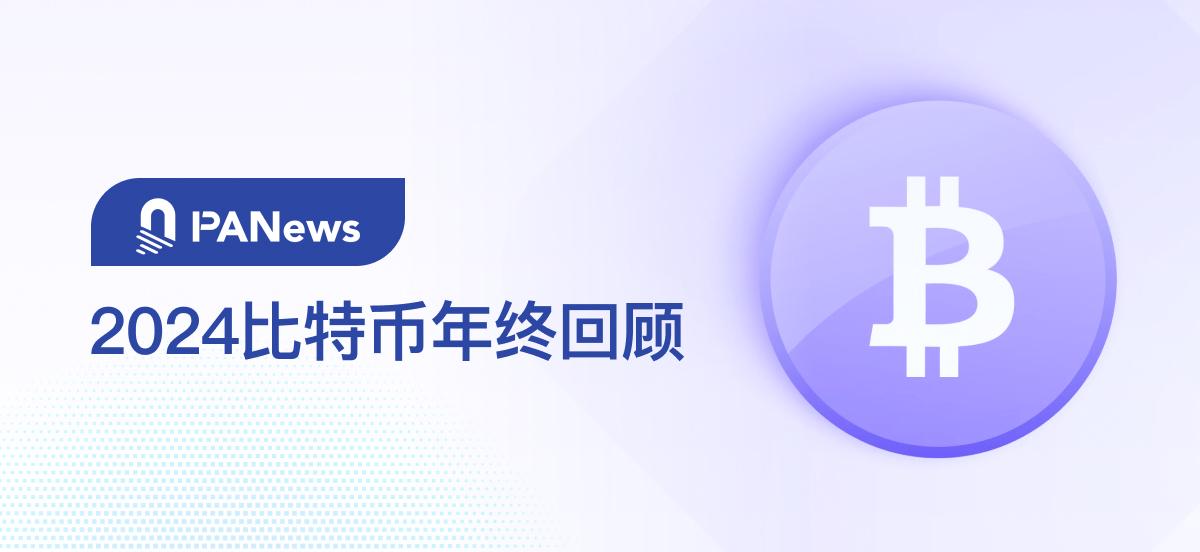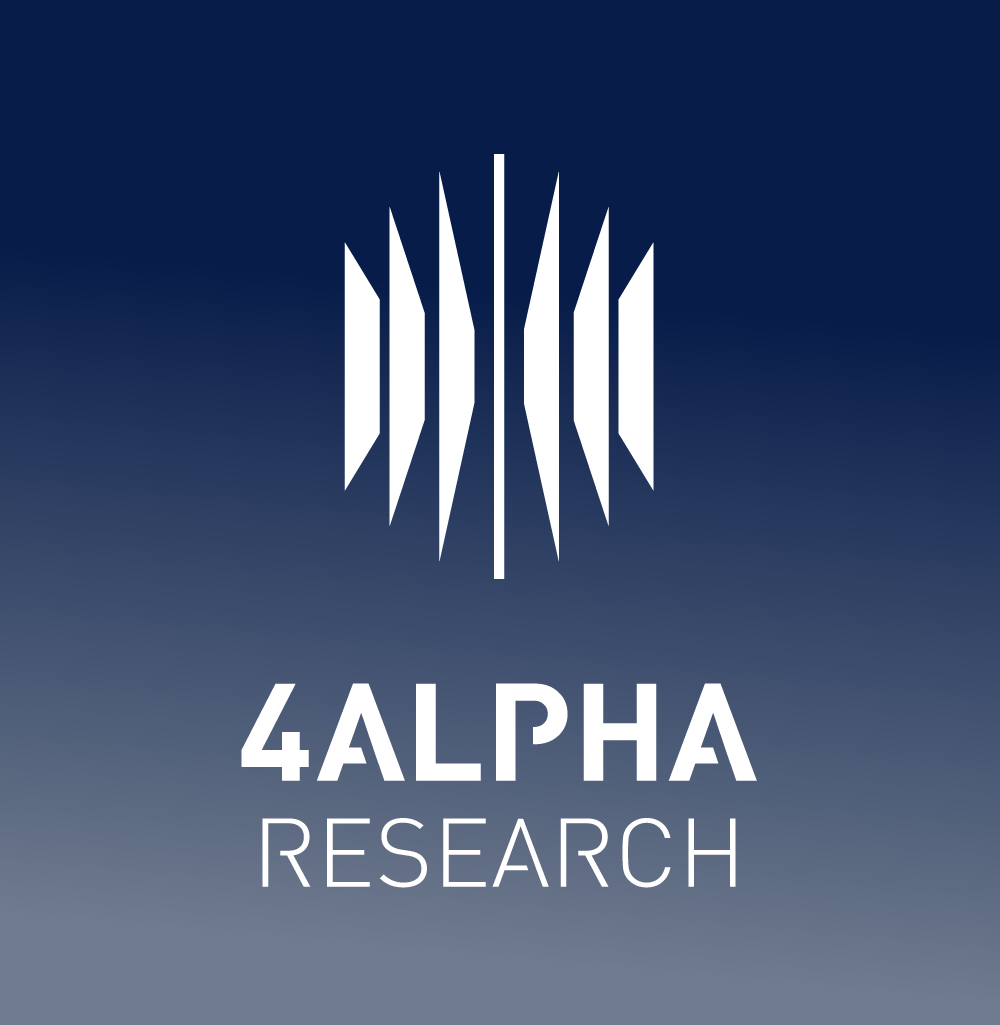- 2024 Financing Report: 1,259 financings, $9.615 billion, the overall market trend is similar to last year
- Important information from last night and this morning (December 25-December 26)
- PA Daily | UXLINK trading volume ranks first on both Upbit and Bithumb; 30 new wallets withdrew 1.37 million LINK from Binance in 5 days
-
 PA一线 · 9 minutes ago
Pantera Capital CEO predicts Bitcoin bull cycle will peak in August 2025
PA一线 · 9 minutes ago
Pantera Capital CEO predicts Bitcoin bull cycle will peak in August 2025Dan Morehead, CEO of Pantera Capital, predicts that the next bull cycle in the cryptocurrency market will peak in 2025. In the Bankless podcast, he elaborated on the basis of this prediction: Bitcoin follows a four-year halving cycle, where miner rewards are halved, resulting in a reduction in supply, and historically, Bitcoin prices have risen sharply before and after these events. The last halving occurred in April 2024, and Morehead predicts that Bitcoin will reach its cycle peak in August 2025 based on historical trends.
-
 链源科技PandaLY · an hour ago
North Korean hackers targeted Hyperliquid, causing more than $7 billion in market value to evaporate. How to prevent possible attacks?
链源科技PandaLY · an hour ago
North Korean hackers targeted Hyperliquid, causing more than $7 billion in market value to evaporate. How to prevent possible attacks?This led to some panic selling in the community, with Hype's maximum decline of more than 25% that day, and its market value evaporating by more than US$7 billion. More than US$150 million of on-chain ecological funds fled.
-
 ZAN Team · 2 hours ago
Web3 Beginner Series: Understand the MEV robot in five minutes, you can also write it
ZAN Team · 2 hours ago
Web3 Beginner Series: Understand the MEV robot in five minutes, you can also write itWith the increasing popularity of blockchain technology, the cryptocurrency trading ecosystem is also expanding rapidly. Decentralized exchanges (DEX) have become an important platform for digital asset trading with their advantages of decentralization and transparency. As the market matures, various automated trading tools have emerged...
- PA Daily | UXLINK trading volume ranks first on both Upbit and Bithumb; 30 new wallets withdrew 1.37 million LINK from Binance in 5 days PA Daily | Analog mainnet launched; Binance will support Fantom (FTM) upgrade to Sonic (S) PA Daily | Binance Launchpool launches Bio Protocol (BIO); Lido launches Ethereum SDK
 Zen · 2 hours ago
2024 Financing Report: 1,259 financings, $9.615 billion, the overall market trend is similar to last year
Zen · 2 hours ago
2024 Financing Report: 1,259 financings, $9.615 billion, the overall market trend is similar to last yearAt the end of the year, PANews reviews the overall primary market performance this year based on the financing information throughout the year to provide a reference for investors.
-
 Foresight News · 3 hours ago
From infrastructure improvement to emerging narrative explosion, an overview of the 2024 Memecoin super cycle
Foresight News · 3 hours ago
From infrastructure improvement to emerging narrative explosion, an overview of the 2024 Memecoin super cycleThe New Year is approaching. In the last week of 2024, Foresight News will use a series of must-read articles at the end of the year to take everyone back to 2024 and look forward to 2025. See the past to know the future.
-
 PA一线 · 3 hours ago
Important information from last night and this morning (December 25-December 26)
PA一线 · 3 hours ago
Important information from last night and this morning (December 25-December 26)U.S. SEC Commissioner: Next year, the SEC's stance on the crypto industry will undergo a major shift and enforcement actions will be reduced; Pump Science: The token economics design has been completed and a BIO airdrop will be conducted; Hashgraph Group has obtained a fund management license in Abu Dhabi and will launch a $100 million Web3 fund.
-
 PA一线 · 4 hours ago
US SEC Commissioner: The SEC's stance on the crypto industry will undergo a major shift next year and will reduce enforcement actions
PA一线 · 4 hours ago
US SEC Commissioner: The SEC's stance on the crypto industry will undergo a major shift next year and will reduce enforcement actionsStarting next year, the U.S. Securities and Exchange Commission (SEC) will temporarily reduce the size of its commissioners while waiting for the Senate to approve the nomination of presidential candidate Donald Trump. During this period, only Republican commissioners Hester Peirce and Mark Uyeda will continue to perform their duties after taking office. According to Peirce, with the departure of SEC Chairman Gary Gensler, the agency's stance on the crypto industry will change significantly.
-
 链上观 · 4 hours ago
Why should AI Agent framework standards be "chained"?
链上观 · 4 hours ago
Why should AI Agent framework standards be "chained"?If AI Agents want to make more reliable autonomous decisions and collaborate with each other, they must inevitably move towards "chaining".
-
 PA一线 · 4 hours ago
Pump Science: Token economics design completed, BIO airdrop to be carried out
PA一线 · 4 hours ago
Pump Science: Token economics design completed, BIO airdrop to be carried outPump Science announced on X that the token economics design is complete and that the BIO airdrop will be conducted. Regarding the token economics design: 5% of the future token supply will be distributed to holders of previous tokens (at the time of migration), and those who currently hold more PS tokens (RIF, URO) will receive new tokens in the future; this mechanism will continue as long as there are new issuances (forever). Regarding the BIO airdrop, BIO Protocol will airdrop BIO to holders of URO and RIF, pending governance approval to connect BIO to Solana, and more airdrops are being considered.
- Crypto Circulating Market Cap (7d)$3,602,293,192,653Market CapFear and Greed Index (Last 30 Days)
 PA一线 · 5 hours ago
Bitcoin accumulation addresses still increased their holdings by 225,280 BTC in December despite significant selling pressure
PA一线 · 5 hours ago
Bitcoin accumulation addresses still increased their holdings by 225,280 BTC in December despite significant selling pressureDemand from Bitcoin accumulators grew significantly during December, with these investors netting 225,280 BTC as of December 23, a monthly increase of 82.6%. At the same time, total sell-side liquidity (i.e., the amount of Bitcoin available for sale) in exchanges and ETFs fell by about 590,000 BTC. Notably, this easing of selling pressure was closely tied to a sharp drop of 520,000 Bitcoins ready for sale between December 22 and 23. The report also noted that the supply of Bitcoins from OTC counters, which handle large transactions, has fallen from 421,000 to 403,000, showing that investor demand is effectively absorbing selling pressure. In addition, the liquidity inventory ratio fell from 12 months in December to 5.5 months, further proving that the current supply is meeting investor demand at an accelerated pace.
-
 PA一线 · 5 hours ago
Hashgraph Group Obtains Fund Management License in Abu Dhabi and Will Launch $100 Million Web3 Fund
PA一线 · 5 hours ago
Hashgraph Group Obtains Fund Management License in Abu Dhabi and Will Launch $100 Million Web3 FundSwitzerland-based Hashgraph Group has obtained a fund management license from the Abu Dhabi Global Market (ADGM) in the United Arab Emirates. The license obtained by Hashgraph Ventures Manager, a subsidiary of Hashgraph Group, allows it to launch a $100 million Web3 venture capital fund from the Abu Dhabi Global Market (ADGM).
-
 深潮TechFlow · 5 hours ago
Market outlook for the next month: Pain and opportunity coexist, learn to profit from rotation
深潮TechFlow · 5 hours ago
Market outlook for the next month: Pain and opportunity coexist, learn to profit from rotationBe sure to do your own research and don’t blindly follow the opinions of others.
-
 Beosin · 15 hours ago
A review of the top ten most influential Web3 attacks in 2024
Beosin · 15 hours ago
A review of the top ten most influential Web3 attacks in 2024The frequent security attacks in 2024 once again remind us that the development of the blockchain industry cannot be separated from the protection of security.
-
 白话区块链 · 16 hours ago
What investment trends do the Trump family’s crypto projects and the assets configured on their chains reveal?
白话区块链 · 16 hours ago
What investment trends do the Trump family’s crypto projects and the assets configured on their chains reveal?Recently, World Liberty Financial (hereinafter referred to as WLFI), which has close ties with the Trump family, has frequently purchased ETH, LINK, AAVE, ENA, etc., triggering a follow-up craze in the market and becoming an indicator that cannot be ignored in the crypto investment market.
-
 PA一线 · 16 hours ago
Israel to launch six Bitcoin mutual funds on December 31
PA一线 · 16 hours ago
Israel to launch six Bitcoin mutual funds on December 31The Israeli Securities Authority (ISA) has approved six mutual funds that track the price of Bitcoin, launched by Migdal Capital Markets, More, Ayalon, Phoenix Investment, Meitav and IBI. Fund management fees range from 0.25% to 1.5%, and one of the funds is actively managed with the goal of outperforming Bitcoin. Initially, these funds will only trade once a day, but they may be able to trade continuously in the future.
-
 肖飒lawyer · 17 hours ago
Occupational crime in the crypto era: Beijing's billion-yuan currency embezzlement case, 89 million yuan in stolen money recovered
肖飒lawyer · 17 hours ago
Occupational crime in the crypto era: Beijing's billion-yuan currency embezzlement case, 89 million yuan in stolen money recoveredToday, Sister Sa’s team will use recent cases that have occurred/solved as an example to talk to you about some key information revealed by these examples of currency-related official crimes in the crypto era.
-
 PA一线 · 17 hours ago
Türkiye's new anti-money laundering regulations require KYC for single crypto transactions over $425
PA一线 · 17 hours ago
Türkiye's new anti-money laundering regulations require KYC for single crypto transactions over $425Turkey today issued new cryptocurrency anti-money laundering (AML) regulations, requiring users with a single transaction amount exceeding 15,000 Turkish lira (about $425) to provide identity information to crypto service providers. The regulations will officially take effect on February 25, 2025.
-
 PA一线 · 18 hours ago
Balaji envisions artificial intelligence and the Internet of Things, and Vitalik reminds that private key ownership requires hard work
PA一线 · 18 hours ago
Balaji envisions artificial intelligence and the Internet of Things, and Vitalik reminds that private key ownership requires hard workBalaji, former CTO of Coinbase, tweeted that in the future, smart cars, smart watches and smart homes will be widely used, and each object will not only be able to communicate with people, but also communicate with each other, record conversations and coordinate tasks for its owner who holds the private key. He called this trend "AI Internet of Things". In response, Vitalik Buterin emphasized that ensuring that the ownership of the device belongs to the private key holder is not a default result, and it requires human efforts to promote it.
-
 区块链骑士 · 18 hours ago
MV Global report: DeSci is expected to usher in explosive growth in 2025 with the help of MEME
区块链骑士 · 18 hours ago
MV Global report: DeSci is expected to usher in explosive growth in 2025 with the help of MEMEMV Global expects Pump.Science to achieve significant expansion in 2025, with at least 10 projects expected to have a market value of more than $100 million by the end of the year.
PANews - Your Web3 Information Officer
Download PANews to track in-depth articles





 Meme日报 · 37 minutes ago
Meme日报 · 37 minutes ago


































